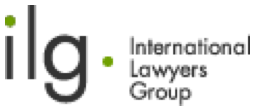All aspects of life are increasingly affected by the proliferation of advances in technology. Wills and estates are no exception. One of the results of the growth of digital assets and online communications is the evolution of evidence that is required for estate litigation and estate administration. Virtually all evidence, unless it is a handwritten note, physical evidence or witness testimony, is now electronic in its original format.
This series of articles, published in the Ontario Bar Association’s Deadbeat Magazine, is intended to assist counsel in understanding the unique legal requirements for electronic evidence, and identifying issues related to estate administration and litigation in the digital age.
The first installment outlines some myths regarding the application of electronic evidence principles in estates litigation. Our following articles will address issues of best practices for electronic evidence and the importance of this source of evidence to your case.
DEBUNKING E-DISCOVERY MYTHS IN ESTATE LAW
MYTH: E-DISCOVERY IS ONLY RELEVANT WHERE THERE ARE LARGE VOLUMES OF DOCUMENTS
Reality: E-discovery is relevant in almost every case. With the ubiquity of computers and smartphones, electronically stored information is everywhere. A person’s digital footprint includes thousands of emails, text messages, documents, photos and other files. It is easy to underestimate the scale of documents that a few gigabytes of personal files can contain. If you are told that a case involves “a few gigabytes” of data, be careful not to underestimate the scale of the undertaking.
MYTH: E-DISCOVERY IS ONLY AFFORDABLE FOR LARGE CASES SUCH AS CLASS ACTION LITIGATION
Reality: This is no longer the case. A number of years ago, it was true that e-discovery was the norm only in large-scale litigation. E-discovery was often expensive, complicated, and tended to require extensive in-house technology infrastructure. However, the landscape has rapidly changed and continues to evolve. Like most technology, costs continue to decrease and effective e-discovery no longer requires complex in-house infrastructure. E-discovery is tailorable to the needs of “smaller” cases in ways that are defensible and proportionate.
MYTH: E-DISCOVERY REQUIRES INVESTMENT IN TECHNOLOGY AND SPECIALIZED TRAINING
Reality: Small and medium-sized firms can now easily engage in cost effective e-discovery. This is due to the decrease in costs discussed above and the emergence of web-based “hosted environments” which can be utilized as a “software as a service” model. In short, firms needing to deal with electronic evidence no longer need big budgets or large IT departments. The rise of “software as a service” has also made costs far more predictable and stable for law firms and their clients.
MYTH: PRESERVING DIGITAL INFORMATION IS COMPLICATED AND/OR EXPENSIVE
Reality: Preserving digital information can be straightforward and inexpensive. Preservation can even be free. In many cases, effective preservation can be as simple as advising family members not to dispose of electronic devices/data storage that belonged to the deceased.
We hope the above provides a better appreciation of the importance of electronic evidence and its application to estates.
ABOUT THE AUTHORS
Crystal O’Donnell, lawyer at Heuristica Discovery Counsel (codonnell@discoverycounsel.ca;www.heuristica.ca) and Holly LeValliant, lawyer at Mills & Mills LLP (www.millsandmills.ca).

 2 St Clair Ave West
2 St Clair Ave West


